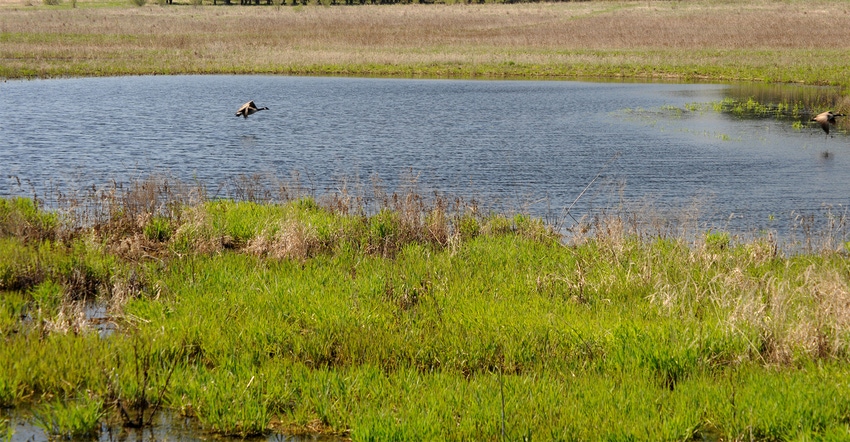November 2, 2018

Twenty-four Iowa landowners in 14 counties enrolled more than 1,800 acres in USDA sponsored conservation easements in Fiscal Year 2018 through the Agricultural Conservation Easement Program, highlighting a year in which USDA is celebrating 25 years enrolling Iowa landowners in easement programs.
Easement programs like ACEP provide habitat for wildlife, improve water quality by filtering sediments and nutrients, reduce flooding, recharge groundwater, protect biological diversity and provide opportunities for education.
“Through wetland easements, we often enroll land with poor crop-producing soils in flood-prone areas and restore them back to their pre-settlement conditions,” says Kurt Simon, state conservationist for USDA’s Natural Resources Conservation Service in Iowa.
NRCS paid about $11.5 million for the value of the 24 easements, which includes acquisition and restoration costs.
“Based on partner input, we prioritize applications that are in north-central Iowa’s prairie pothole region or adjacent to other natural areas, so we can develop larger wetland complexes where wildlife can thrive,” Simon says. “Typically, the land we enroll in conservation easements is better suited for wildlife and recreation than it is for growing corn and soybeans.”
Iowa leads in easements
Since 1992, Iowa NRCS has enrolled 1,642 easements covering 187,413 acres. Iowa ranks first in the nation for the number of easements during that period, just ahead of South Dakota, New York, Missouri and Minnesota.
“We’ve encountered many flood disasters during the past 25 years in which landowners decided to enroll their flooded lands into permanent easements, instead of continuing to battle cropping wet areas,” Simon says. “We work with many landowners and conservation partners who do an excellent job supporting our programs and managing the easements.”
Sindra Jensen, easement coordinator for Iowa NRCS, says there is a waiting list of 92 Iowa applicants for enrollment in ACEP Wetland Reserve Easements. Applications are ranked by several factors, including:
• Location and size (floodplain or pothole, larger than 35 acres, contiguous to other wetlands)
• Wildlife benefits (benefit to threatened and endangered species)
• Water quality benefits (ag drainage well closure or near water quality improvement project)
Conservation easements are not limited to wetlands. They also include agricultural land easements that will protect the agricultural use and conservation values of eligible land. To learn more about USDA conservation easements, visit ia.nrcs.usda.gov.
Source: USDA
You May Also Like




